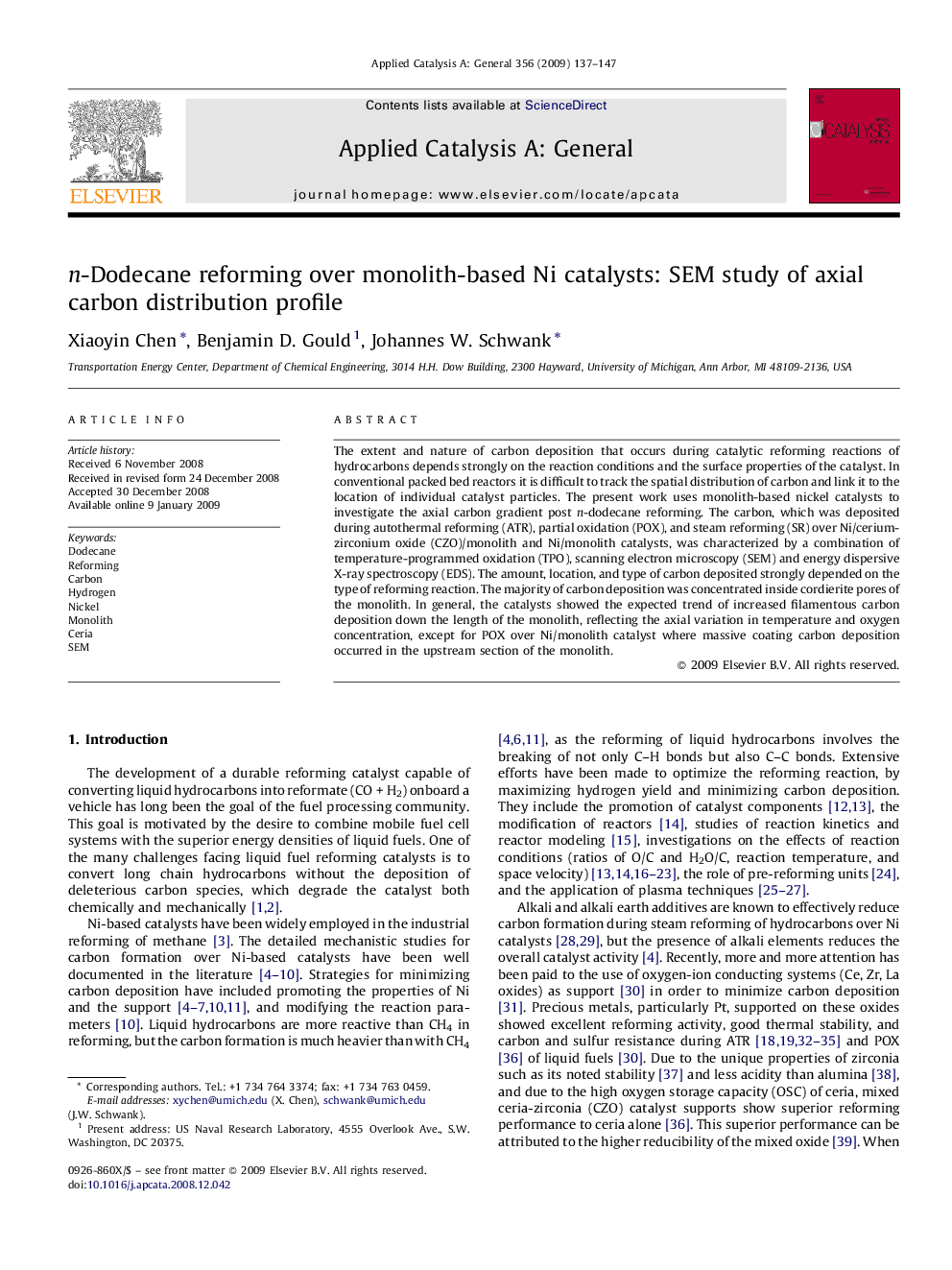| کد مقاله | کد نشریه | سال انتشار | مقاله انگلیسی | نسخه تمام متن |
|---|---|---|---|---|
| 42541 | 45930 | 2009 | 11 صفحه PDF | دانلود رایگان |

The extent and nature of carbon deposition that occurs during catalytic reforming reactions of hydrocarbons depends strongly on the reaction conditions and the surface properties of the catalyst. In conventional packed bed reactors it is difficult to track the spatial distribution of carbon and link it to the location of individual catalyst particles. The present work uses monolith-based nickel catalysts to investigate the axial carbon gradient post n-dodecane reforming. The carbon, which was deposited during autothermal reforming (ATR), partial oxidation (POX), and steam reforming (SR) over Ni/cerium-zirconium oxide (CZO)/monolith and Ni/monolith catalysts, was characterized by a combination of temperature-programmed oxidation (TPO), scanning electron microscopy (SEM) and energy dispersive X-ray spectroscopy (EDS). The amount, location, and type of carbon deposited strongly depended on the type of reforming reaction. The majority of carbon deposition was concentrated inside cordierite pores of the monolith. In general, the catalysts showed the expected trend of increased filamentous carbon deposition down the length of the monolith, reflecting the axial variation in temperature and oxygen concentration, except for POX over Ni/monolith catalyst where massive coating carbon deposition occurred in the upstream section of the monolith.
The axial gradient of carbon, which was deposited over monolith-based Ni catalysts during autothermal reforming (ATR), partial oxidation (POX), and steam reforming (SR), was characterized by a combination of temperature-programmed oxidation (TPO), scanning electron microscopy (SEM) and energy dispersive X-ray spectroscopy (EDS). The amount, location, and type of carbon proved to depend strongly on the type of reforming reaction and the geometry of monolith.Figure optionsDownload as PowerPoint slide
Journal: Applied Catalysis A: General - Volume 356, Issue 2, 15 March 2009, Pages 137–147